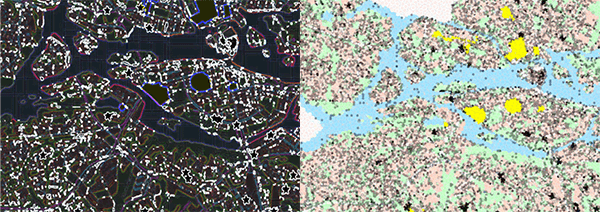AI Safety Perception Patterns
In this study, we explore a combination of data sources to produce an AI safety perception map of the city of Stockholm, Sweden. The ultimate goal of this research is to develop a prototype of a long-term monitoring platform using AI that is reproducible.

Outputs can be presented in Stockholm municipality’s GIS platform so that planners and architects can make use of the findings/knowledge as a knowledge base for the planning and design of new projects. The algorithms and online surveys can be rerun using exactly the same code year after year, so the city can understand the impact of interventions—this is an important feature of this research given the fact that increased safety is one of the key targets for the city of Stockholm and of Goal 11 of the United Nation’s 2030 Agenda for Sustainable Development.
Research questions
- What does make a city (un)safe? Which are the most common urban features that make people declare feeling (un)safe?
- How do safety patterns relate to the physical and social landscape of urban environments according to different data sources? Do they vary by groups of the population and how?
- How will (and should) city planning be conducted to better detect and monitor short-and long-term safety conditions? Is this methodology feasible to create a safety monitoring platform that is reproducible over time?
Project period
2021-2022



